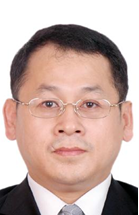
New C8 free oil repellent coating
This technology is expected to reduce the operation time, reduce the medical care cost, and improve the safety operation.

3rd September 2014
Innovation in Textiles
|
Shanghai
Professor Long Yunze from the Qiingdao University School of physical science has carried out the work, joined by the General Hospital of the People's Liberation Army (PLAGH), and China National Center for Nanoscience and Technology.
In accordance with the reconstruction of organ integrity theory, an air assisted in situ electrostatic spinning device has been designed, and this project has for the first time applied this technique to in vivo animal liver resection hemostatic experiment.
The device electrospun the cyanoacrylate medical adhesive into nano fibre, deposited it onto the wound surface under air guide in accuracy and uniformity, and realised fast reliable liver large area wound hemostasis.
It is understood that α-cyanoacrylate medical adhesive is the main component of super glue, which has been approved by the USA food and Drug Administration for human hemostatic. However, the medical glue applied to the wound may lead the hemostatic membrane to become uneven and rupture, especially for the more complex, larger wound, which may lead to more serious postoperative oozing and bleeding.
The study has fully excavated the potential of existing medical hemostatic materials with the new nano technology idea, which changes the traditional application mode.
This technology is expected to reduce the operation time, reduce medical care costs, and improve safety. Therefore, it becomes possible for the future parenchymatous organ part operation excision, quick and reliable hemostatic, and the abandoning of the traditional drainage tube implantation.
Professor Long Yunze has also made progress in the electrospun zinc oxide nano fibre and optoelectronic devices. The research group has applied electrospinning technique in the preparation of cerium doped zinc oxide nano fibres, and for the first time observed the P type semiconductor in the samples. The relevant research results have been published in the USA Applied Physics Letters.
Professor Long Yunze has also cooperated with Hong Kong University of Science & Technology (HKUST). They have applied near field electrospinning technology in the preparation of the all prin zinc oxide nanowire photodetectorst with adjustable gap width and ultrahigh sensitivity.
Qingdao University:
PLAGH:
National Center for Nanoscience and Technology:
HKUST:
______________________________________________________________
 Oliver Haiqing Hua, a textiles business analyst, has joined the Innovation in Textiles team to provide regular insider reports on developments within the Chinese textile industry. Oliver focuses on the development and changes in the Chinese textiles industry and associated industries, and gives in-depth analysis and interpretation of the relevant policies, industry trends, and business events.
Oliver Haiqing Hua, a textiles business analyst, has joined the Innovation in Textiles team to provide regular insider reports on developments within the Chinese textile industry. Oliver focuses on the development and changes in the Chinese textiles industry and associated industries, and gives in-depth analysis and interpretation of the relevant policies, industry trends, and business events.
Mr. Hua previously worked for the former Ministry of Equipment & Materials and the former Ministry of Internal Trade of China from 1984 to 1997. His role included reporting on the market, raw materials, production, logistics, finance, management dynamics, as well as the analysis related to all the upstream and downstream aspects in the industry supply chain.

Business intelligence for the fibre, textiles and apparel industries: technologies, innovations, markets, investments, trade policy, sourcing, strategy...
Find out more